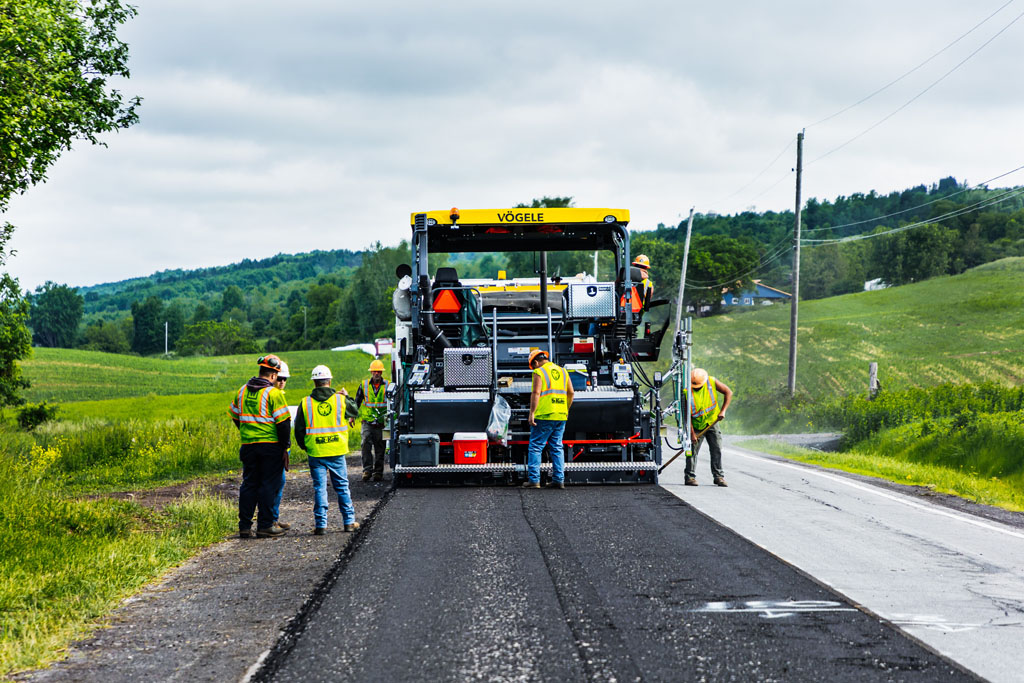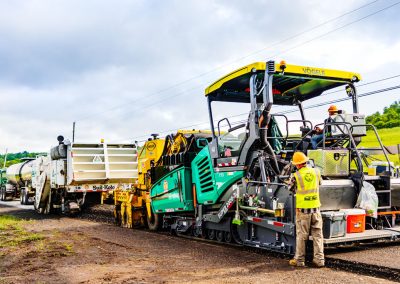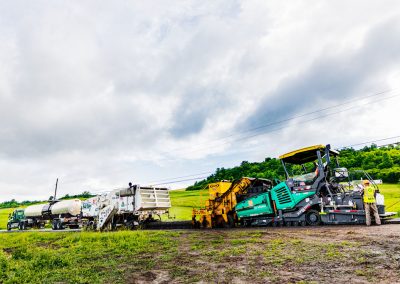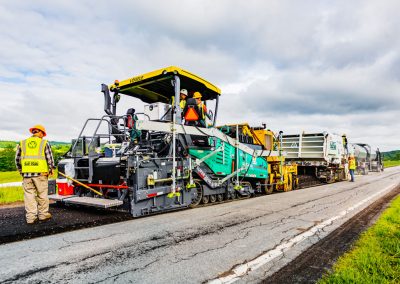The Problem
As a roadway ages, it becomes geometrically poor and structurally deficient beyond preventative maintenance as a suitable/cost-effective solution.
The Solutions
Cold-In-Place Recycling – an in-situ process which uses various interdependent machines working in concert to form what is referred to as a recycling “train”. The recycling train mills the existing road surface to a uniform aggregate chunk size, adds virgin aggregate along with an engineered High-Float asphalt emulsion, and finally applies the newly rehabilitated mix via a conventional paver. After compaction of the rehabilitated mix, the road is ready for traffic.
The Cold-In-Place Recycling process does not require heat like other methods to recycle or rehabilitate the existing pavement. Hence, overall energy consumption is reduced and greenhouse gas emissions are cut. Cold-In-Place Recycling utilizes 100% of the existing road structure, making it the most economically and environmentally friendly way to rehabilitate a marginal road structure by restoring structural strength along with ride quality. The rehabilitated binder, now in its new life, is ready for the specified wearing course. Cold-In-Place Recycling is the method of choice when sufficient pavement depth exists to create a base binder layer on a road of significant length.
Central Plant Recycling – the process of mixing millings and virgin aggregate with High-Float asphalt emulsions. The mix is designed to either use these materials immediately or to be stockpiled for later use. This practice is ideal for village streets, city blocks, and curb lines. It is especially effective when the need arises to use stockpiled millings. The central plant recycling process yields structurally sound and capable mixes while minimizing the need for virgin aggregate materials.








